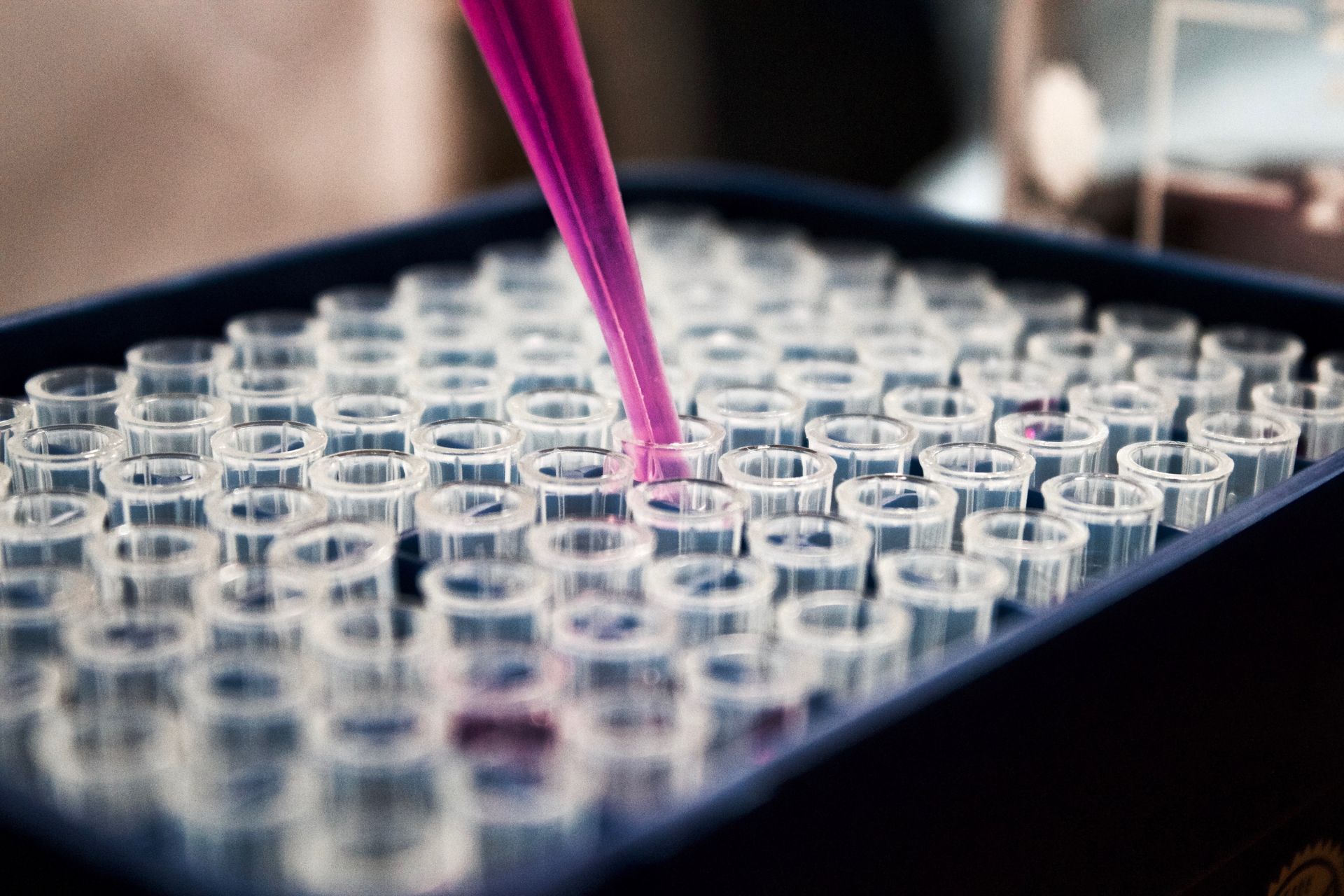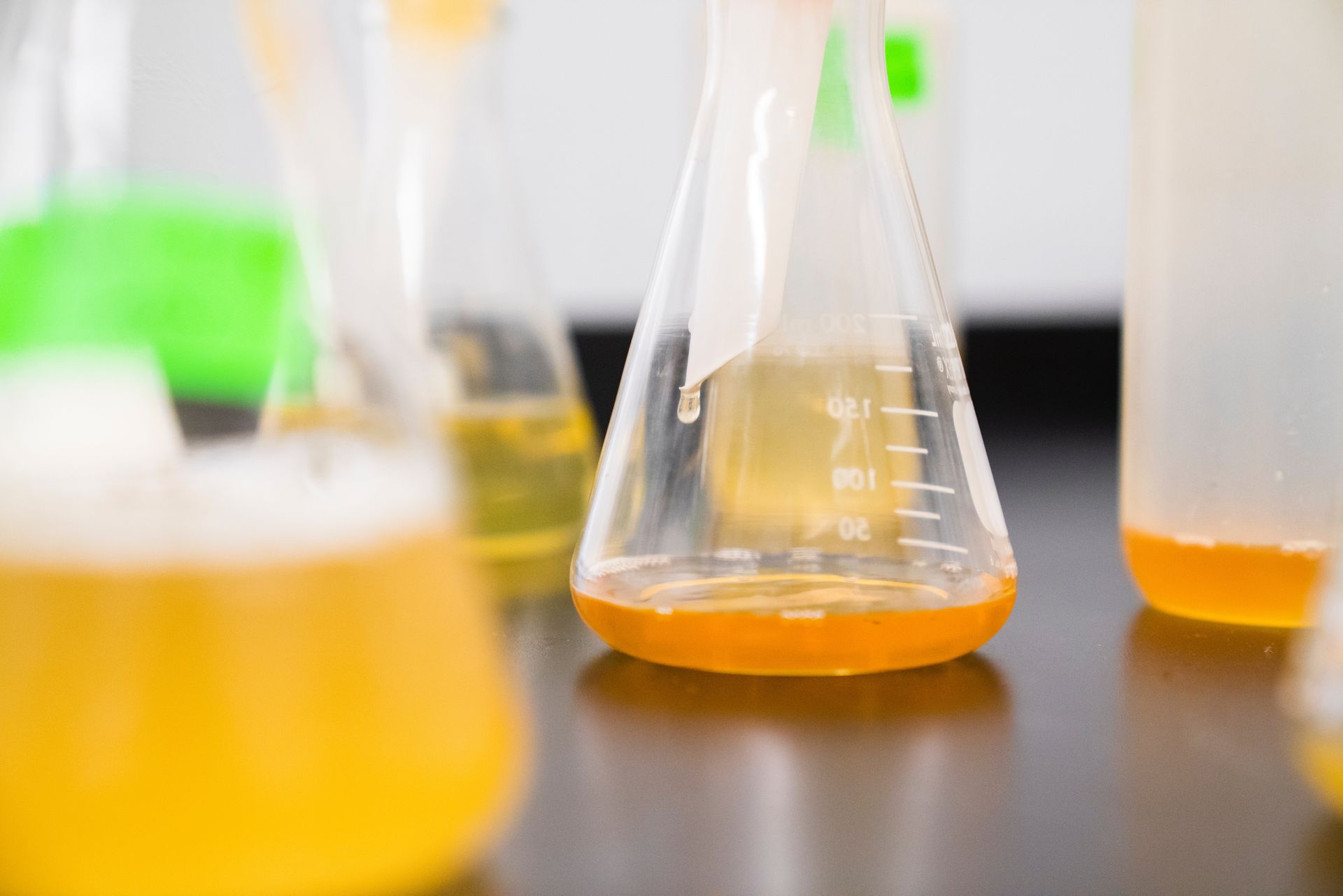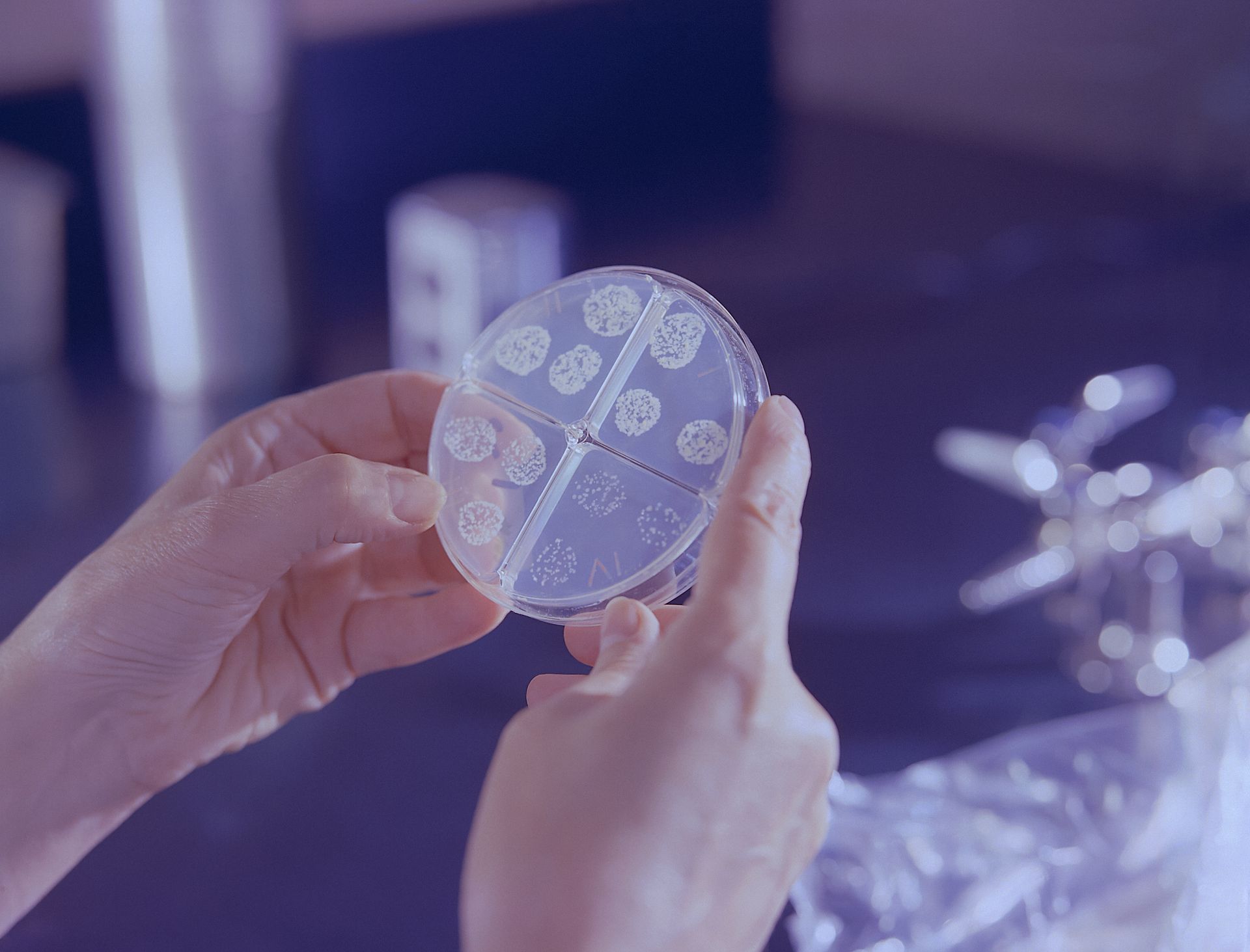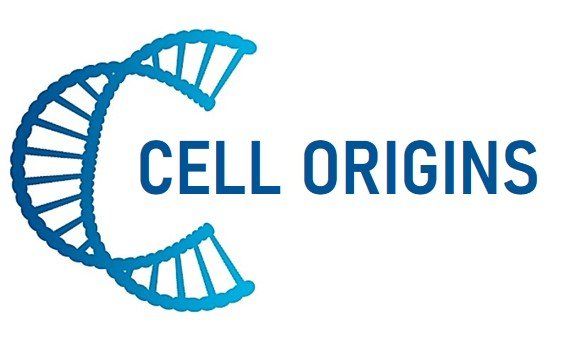Explore Our Products and Services
At Cell Origins, we aim to revolutionize peptide and antibody discovery by providing high-quality and easy to access phage display libraries and reagents, as well as affinity selection and ligand screening services.
Leading Phage Display
We understand the importance of using high-quality libraries for biopanning experiments and the complexity of designing successful phage display affinity selections. Whether you are exploring new avenues of discovery or expanding existing ones, Cell Origins has the experience and resources to help you achieve your scientific goals. Having decades of experience and expertise in phage display technology, we strive to provide the best solutions for other scientists. With our phage display products and services, you can spend less time and cost on your affinity selections and instead focus on leveraging your selected peptides and antibodies.

Premade and Customized Phage Display Libraries
At Cell Origins, we understand that peptide and antibody discovery can be a challenge. To help overcome these challenges, we are dedicated to providing high-quality phage display libraries that are rigorously controlled to obtain the lowest rate of stop codons and other unintended sequences. We offer newly created libraries of validated high quality and diversity, as well as access to the original libraries by Nobel prize winner, Dr. George Smith.
Our custom libraries are made with built-in options for post-selection analysis such as biotinylation, expression of soluble ligands, affinity isolation, and more. This allows you to get the most out of your peptide or antibody phage display library and get the best results. Our experts are here to help you every step of the way, ensuring that you get the most optimal phage display library for your needs.

Tailored Affinity Selections for Unique Project Needs
At Cell Origins, we understand that each project is unique and requires customized protocols to meet its individual needs. We're at the forefront of utilizing phage display technology to provide exceptional biopanning services for peptide and antibody discovery.
Our customized protocols are designed to meet the unique needs of each project. We offer tailored affinity selections that begin with gaining in-depth knowledge of each target molecule or tissue to design a customized phage display biopanning protocol based on our unique multi-tiered approach. Our strategies yield proven results both in vitro and in vivo, ensuring that our clients receive quality solutions to unlock their drug discovery projects.

Advanced Peptide and Antibody Screening
Biomolecular interactions among proteins, nucleic acids, carbohydrates, and lipids play a crucial role in biological processes. However, accurately capturing these interactions in the lab is challenging and can lead to misidentification and failure to identify hit molecules. At Cell Origins, we overcome these challenges by developing customized in vitro, in situ, or in vivo protocols for each screening procedure, ensuring the identification of the best peptides and antibodies.
At Cell Origins, we also employ our own novel approach to high-throughput screening of phage-displayed peptides and antibodies. Our novel method guarantees rapid production and purification of phage particles followed by unique biomolecular interaction analysis with 10-100x increased sensitivity compared to conventional methods.

The Vectors that Built Phage Display
In phage display technology, vectors are invaluable tools for introducing foreign genetic material into host cells, facilitating the propagation of DNA molecules, and for the production of phage virions.
Years prior to pioneering phage display technology. Dr. George P. Smith developed bacteriophage cloning vectors. Since then, the vectors have been utilized to create numerous phage display libraries of both peptides and antibodies.
Cell Origins carries the original bacteriophage vectors created by Dr. George Smith. We also offer customized bacteriophage and phagemid vectors with built-in tagging and analysis options to streamline your phage display procedures.

Straight-Forward Library Amplification
As a leader in phage display technology, we understand the importance of amplifying stable libraries without losing ligand expression or library diversity.
Cell Origins provides E. coli strains and detailed protocols for the most optimal amplification of peptide and antibody phage display libraries.

Need an Expert on Your Team?
Our team of industry-leading scientists have over 30 years of experience developing novel solutions for phage display projects. We specialize in custom affinity selections using our multi-tiered approach as well as designing high-throughput screening procedures.
Regardless of your challenges, we can develop a comprehensive research strategy tailored to your needs to ensure your success in peptide and antibody discovery. We offer consulting on all levels - from developing individual protocols to becoming an extra member of your team for as long as you need us. At Cell Origins, our team is dedicated to providing your project with the expertise it needs.
-
Published Work
Axiak-Bechtel, S. M., Leach, S. B., Scholten, D. G., Newton-Northup, J. R., Johnson, B. J., Durham, H. E., Gruber, K. A., Callahan, M. F. (2021). Pharmacokinetics and safety of TCMCB07, a melanocortin-4 antagonist peptide in dogs. Pharmacology Research & Perspectives. Vol. 9(3)
Asar, M., Franco, A., Soendergaard, M. (2020). Phage Display Selection, Identification, and Characterization of Novel Pancreatic Cancer Targeting Peptides. Biomolecules. 10(5), 714
Asar, M., Gunby, T., Franco, A., Woodson, C., Soendergaard, Mette. (2020). Identification of an Indiscriminate Peptide by Phage Display Technology. The FASEB Journal 34:1_supplement, 1-1
-
More
Asar, M., Newton-Northup, J., Deutscher, S., Soendergaard, M. (2019). Ovarian Cancer Targeting Phage for In Vivo Near-Infrared Optical Imaging. Diagnostics, 9, 183.
Newton-Northup, J.R., and Deutscher, S.L. (2017). Bacteriophage for the Development of Novel Tumor-Targeting Agents with Specific Pharmacokinetics and Imaging Applications. Methods in Molecular Biology in Biosensors and Biodetection.
Newton-Northup, J.R., and Deutscher, S.L.. (2016). Cytotoxic Tumor-Targeting Peptides From In Vivo Phage Display. Combinatorial Chemistry & High Throughput Screening. Vol. 19(5): 370–377
García, M. F., Zhang, X., Shah, M., Newton-Northup, J., Cabral, P., Cerecetto, H., and Quinn, T. (2016). 99mTc-bioorthogonal click chemistry reagent for in vivo pretargeted imaging. Bioorganic & Medicinal Chemistry. Vol. 24(6): 1209–1215
Newton-Northup, J.R., Dickerson, M.T., Kumar, S.R., Smith, G.P., Quinn, T.P., And Deutscher, S.L. (2014) In vivo bacteriophage peptide display to tailor pharmacokinetics of biological nanoparticles. Molecular Imaging and Biology. 16(6), 854-864.
Soendergaard M., Newton-Northup J. R., Deutscher S. L. (2014): In Vivo Phage Display Selection of an Ovarian Cancer Targeting Peptide for SPECT/CT Imaging. American Journal of Nuclear Medicine and Molecular Imaging. 4(6): 561–570.
Soendergaard, M., Newton-Northup, J.R., and Deutscher, S.L. (2014) In vitro high throughput phage display selection of ovarian cancer avid phage clones for near-infrared optical imaging. Combinatorial Chemistry and High Throughput Screening. 17(10).
Newton-Northup, J.R., and Deutscher, S.L. (2013). Contending With Target Unrelated Peptides from Phage Display. Journal of Molecular Imaging & Dynamics. Vol. 2(2):
Newton-Northup, J. R., Dickerson, M. T., Ma, L., Besch-Williford, C. L., Deutscher, S. L. (2013). Inhibition of metastatic tumor formation in vivo by a bacteriophage display-derived galectin-3 targeting peptide. Clinical & Experimental Metastasis. Vol. 30:119–132
Newton-Northup, J.R., and Deutscher, S.L. (2012) Contending with target unrelated peptides from phage display. Journal of Molecular Imaging and Dynamics. 2(2).
Soendergaard, M., Newton-Northup, J.R., Palmier, M.O., and Deutscher, S.L. (2011) Peptide phage display for discovery of novel biomarkers for imaging and therapy of cell subpopulations in ovarian cancer. Journal of Molecular Biomarkers and Diagnosis, S:2.
Newton-Northup, J.R., Figueroa, S.D., and Deutscher, S.L. (2010). Streamlined in vivo selection and screening of human prostate carcinoma avid phage particles for development of peptide based in vivo tumor imaging agents. Combinatorial chemistry & high throughput screening. 14(1):9-21
Deutscher, S. L., Dickerson, M., Gui, G., Newton, J., Holm, J. E., Vogeltanz-Holm, N., Kliethermes, B., Hewett, J. E., Kumar, S. R., Quinn, T. P., Sauter, E. R. (2010). Carbohydrate antigens in nipple aspirate fluid predict the presence of atypia and cancer in women requiring diagnostic breast biopsy. BMC Cancer. Vol. 10(519)
Newton-Northup, J.R., Figueroa, S.D., Quinn, T. P., and Deutscher, S.L. (2009). Bifunctional phage-based pretargeted imaging of human prostate carcinoma. Nuclear Medicine and Biology. Vol. 36(7):789-800
Jin, X., Newton, J. R., Montgomery, S., Smith, G. P. (2009). A generalized kinetic model for amine modification of proteins with application to phage display. Biotechniques. Vol. 46(3):175-182
Newton-Northup, J.R., and Deutscher, S.L. (2009). In vivo bacteriophage display for the discovery of novel peptide-based tumor-targeting agents. Methods in Molecular Biology. Vol. 504:275-90.
Newton-Northup, J.R., and Deutscher, S.L. (2008). Peptide Phage Display. Handbook of Experimental Pharmacology: Molecular Imaging I. Vol. 185 Pt 2:145-163.
Newton, J. R., Miao, Yubin., Deutscher, S. L., and Quinn, T. P. (2007). Melanoma Imaging with Pretargeted Bivalent Bacteriophage. Journal of Nuclear Medicine. Vol. 48(3):429-436
Newton, J. R., Kelly, K. A., Mahmood, U., Weissleder, R., and Deutscher, S. L. (2006) In vivo selection of phage for the optical imaging of PC-3 human prostate carcinoma in mice. Neoplasia. 8(9), 772-780.
Contact Us Any Time
Contact Us
We will get back to you as soon as possible
Please try again later
